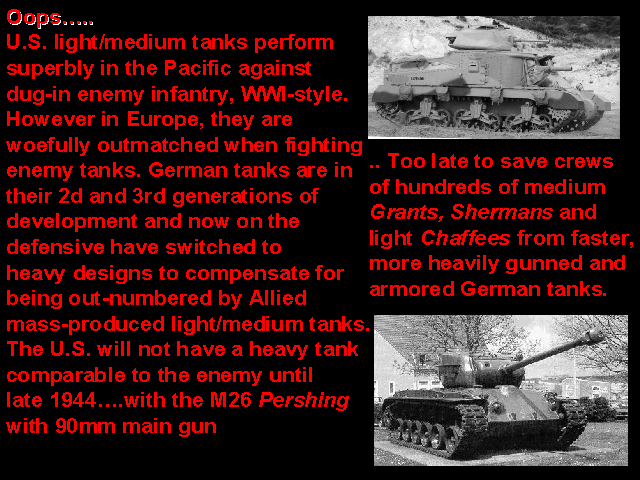
|








|
Slide 8 of 24
Even more relevant was that 2d and 3rd generation German tanks were already designed/improved for tank-to-tank combat and had the necessary frontal armor to keep out at least the weak shells that were fired by up to 3"L/50 while having good to excellent overmatching guns on their own. The U.S. had a great advantage in the gyroscopic vertical stabilization, numbers and fuel supply. M26 Pershing wasn't in much action until Rhine crossing in 1945, and insignificant afterwards.
VIDEO:
PART 4: German 60-ton Heavy Tiger tank constantly stuck in mud, out-numbered could kill scores of medium T34 tanks but the Soviets kept coming in greater numbers, T34s had extra wide tracks to stay mobile in mud, German 43-ton Medium Panther tanks was copy of T34, Battle of Kursk, il-2 strafing, Soviets have AT ditches, landmines, artillery massed; no mobility, no surprise
PART 5: Desperate Rommel used 85% captured vehicles, ultra secret sinking all his supply ships, U.S. 30-ton Medium Sherman tanks reliable but under-armored and outgunned by German Panther/Tiger tanks, APG testing to find German tank weak spots, German 68-ton King Tiger II tanks at Battle of the Bulge, slow to move, not produced in quantities to win the war, not used to mass-production techniques just 5, 000 Tigers compared to 55, 000 Shermans, break-down-prone ever 100 miles